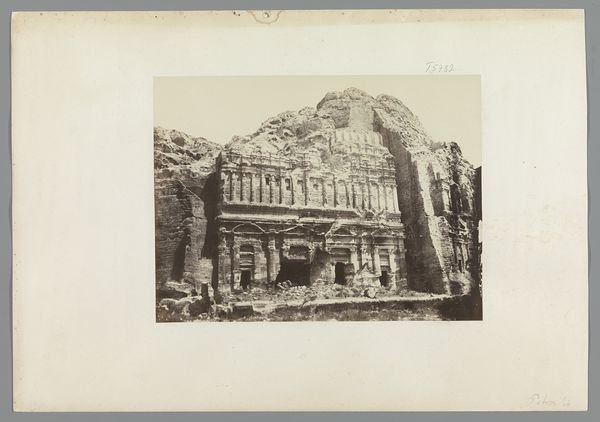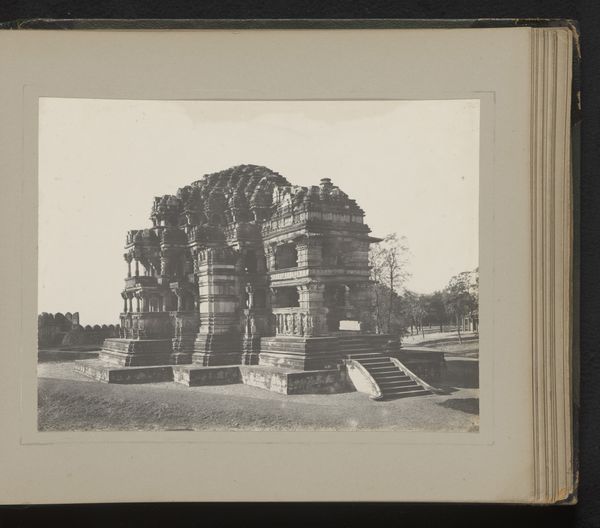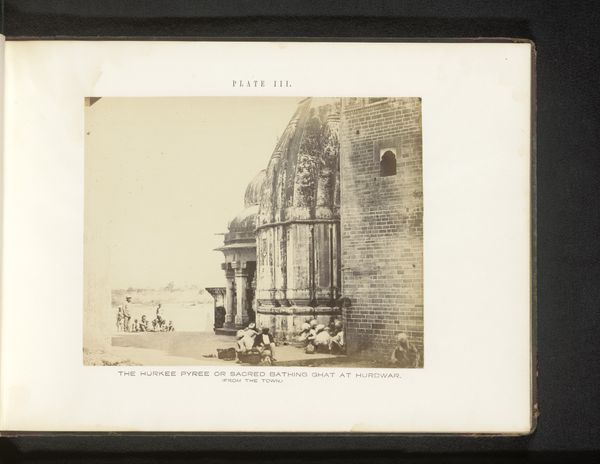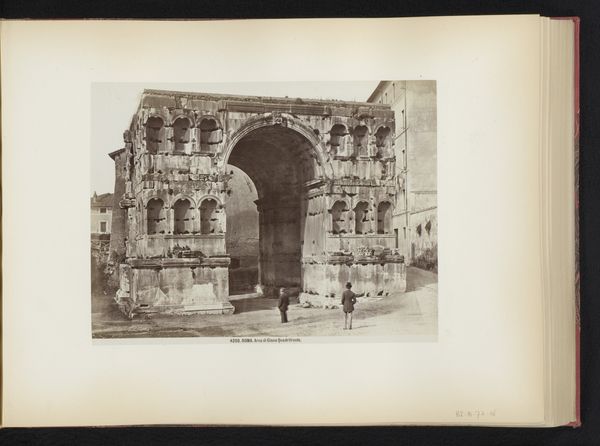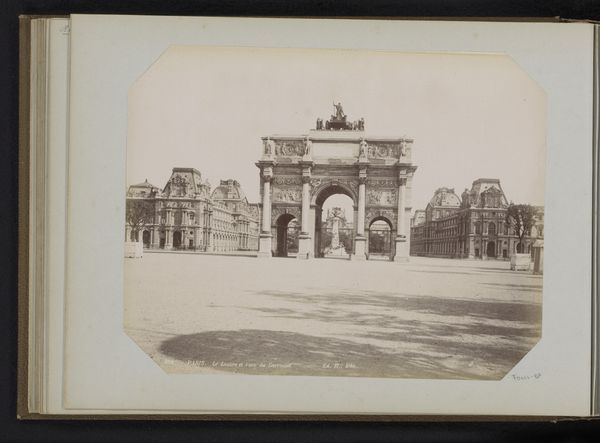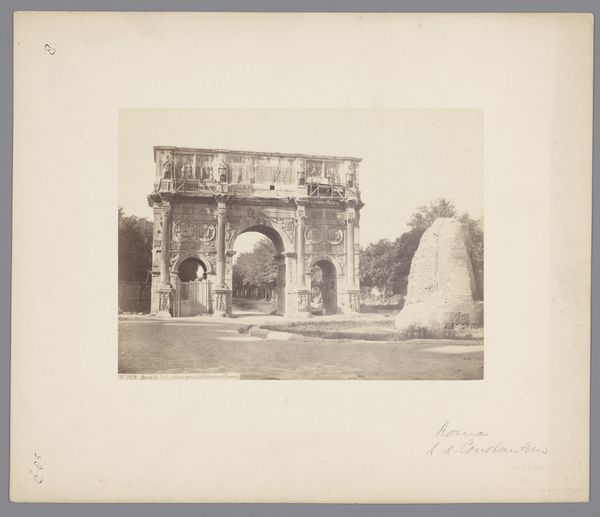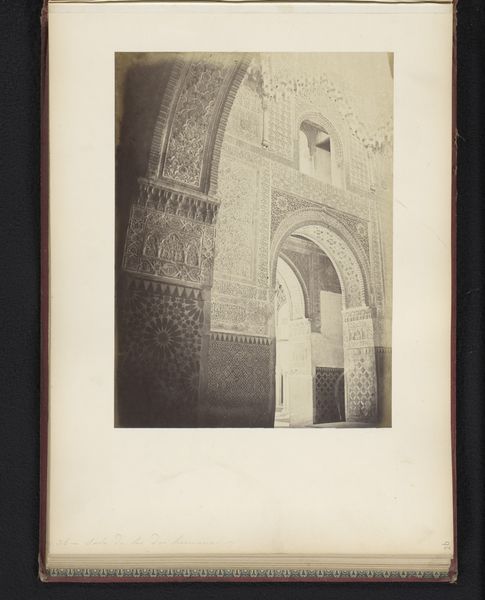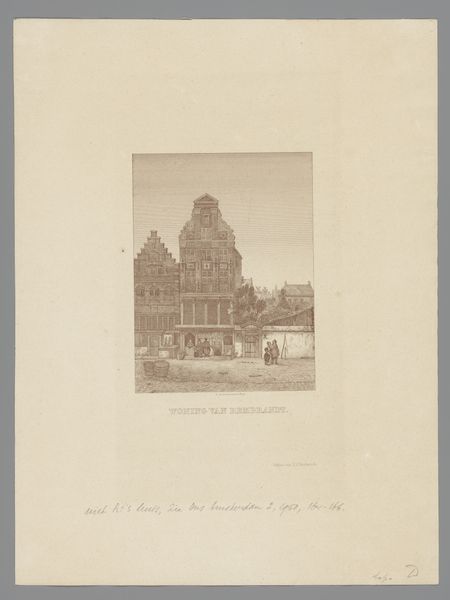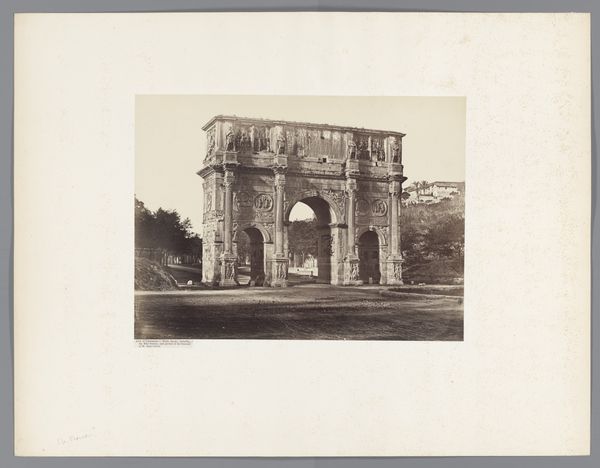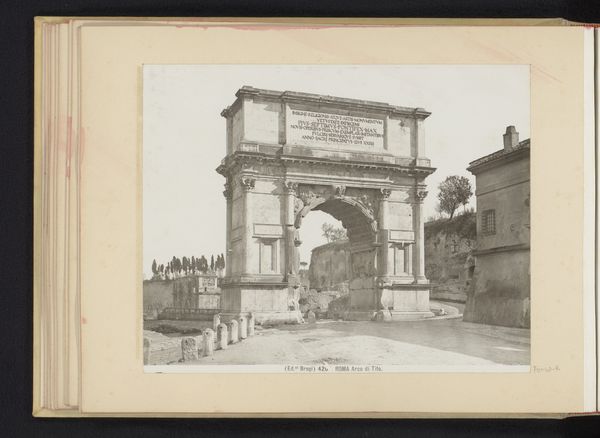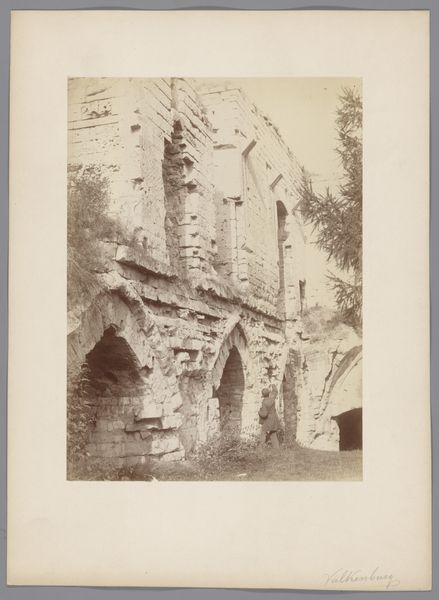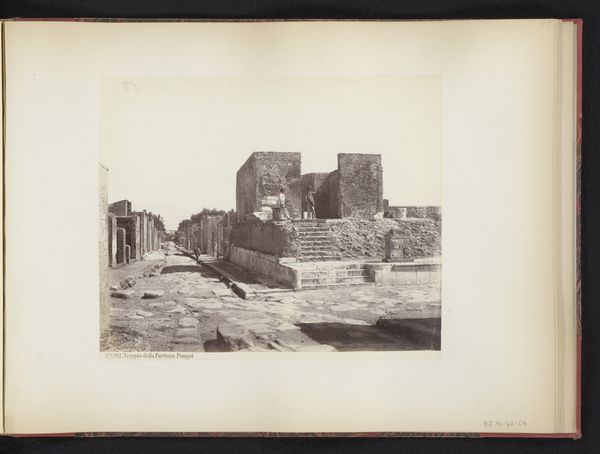
tempera, print, photography, architecture
#
tempera
# print
#
landscape
#
photography
#
geometric
#
ancient-mediterranean
#
orientalism
#
architecture
Dimensions: height 209 mm, width 144 mm
Copyright: Rijks Museum: Open Domain
Curator: This is "Gezicht op Teli Ka Mandir", a print dating to around 1900 by K.H. Mawal. It shows an ancient temple. What's your initial reaction? Editor: Stark, almost imposing. The monochrome palette accentuates the temple's severe geometry and intricate carvings, yet the flat, open space in front softens its monumentality somehow. Curator: Mawal’s lens captures not just the architecture but the gaze itself. Photography like this reinforced European understandings of India—a landscape dominated by ancient, monumental ruins awaiting "discovery" and study. The temple here becomes a symbol within a colonial narrative. Editor: I see your point, but can't we also consider the compositional strategy at play? The strong vertical thrust of the temple against the relatively undifferentiated ground creates a powerful figure-ground relationship, one that emphasizes the architectural object itself. It uses a structured arrangement, right? Curator: Precisely. Mawal, consciously or not, employs techniques that mirror architectural renderings of the time. Look at the meticulous detail afforded to the temple's facade, against the hazy background which implies a desire to classify and document—hallmarks of the Orientalist perspective. This building is rendered as "other." Editor: What I'm intrigued by is how this photograph as a print, as a material object, circulated within different economies— both intellectual and, possibly, commercial. Who was its audience, and how did they engage with this image of the Teli Ka Mandir? It reflects not only Mawal's intention, but also the intentions of patrons and institutions who reproduced it as a work of art. Curator: Those questions of patronage and circulation open up discussions on its function within systems of power. By analyzing its presentation we question whose story it ultimately tells. Editor: Agreed. And by analyzing the photographic image as a set of pure relations between light and form, we have additional perspectives. Both modes of interrogation can bring fresh insight into its significance. Curator: Absolutely, seeing it both for its visual components, as well as the historical narratives intertwined within the frame expands our vision. Editor: Indeed, that careful balancing act—it brings the piece to life.
Comments
No comments
Be the first to comment and join the conversation on the ultimate creative platform.
